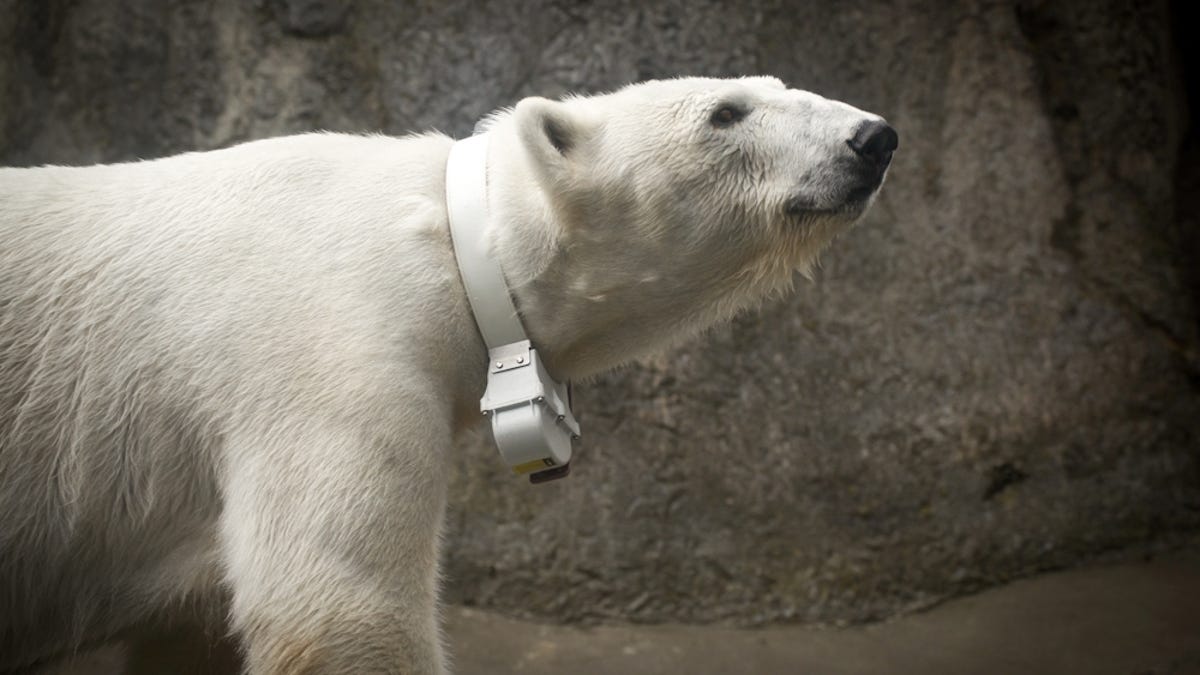Polar bear dons high-tech collar for USGS
Tasul the polar bear is helping scientists collect valuable information on how bears are reacting to climate change by wearing a high-tech collar in her enclosure at the Oregon Zoo.

It's hard to monitor polar bears in the wild. They live in remote, hard-to-access places. They're also big and bitey.
So researchers from the U.S. Geological Survey decided to kick off a new polar bear-monitoring program in an easier place than the Arctic: the Oregon Zoo.
Tasul is a resident of the zoo and she's a lot easier to get to than her kin in the wild. She's wearing an accelerometer-equipped collar for short periods of time each day while a researcher videotapes her. Data collected from the accelerometer is matched to the video, creating a database of polar bear movements.
"Tasul was the perfect candidate for this study because she already participates in many health-care behaviors voluntarily, as opposed to requiring tranquilization," Amy Cutting, Oregon Zoo curator, said in a statement. "She doesn't mind wearing the collar and actively cooperates. She is a very curious bear and seems interested in all the extra attention from keepers."
The plan is to place similar collars on wild bears. The same accelerometer data can be collected from those collars and matched to the movements that Tasul displayed. The researchers won't need to actually see the wild bears in action. They will just need to translate the accelerometer data to know if a bear is sleeping, swimming, walking, or running.
"Our research shows that polar bears are being displaced from sea ice habitats they formerly used. This collaborative project with the Oregon Zoo will help us understand the implications between going to land or staying with the ice as it retreats hundreds of kilometers north into the Arctic Basin," says USGS wildlife biologist Anthony Pagano.
Zookeepers got Tasul adjusted to the neckwear by starting her off with a fabric collar and slowly working up to the full-size collar over several months. They also took the opportunity to attach a GoPro video camera to the collar, giving us bear-view cam footage to enjoy.
(Via Oregon Live)

